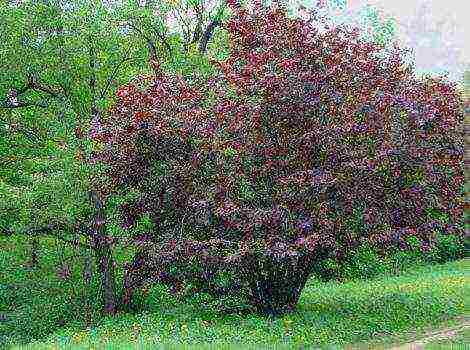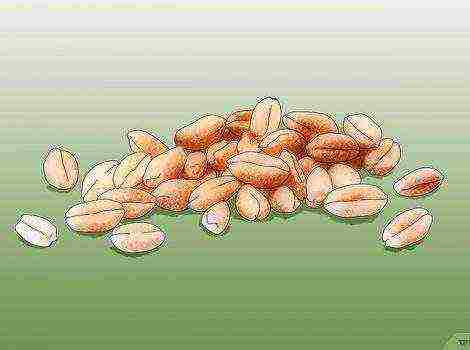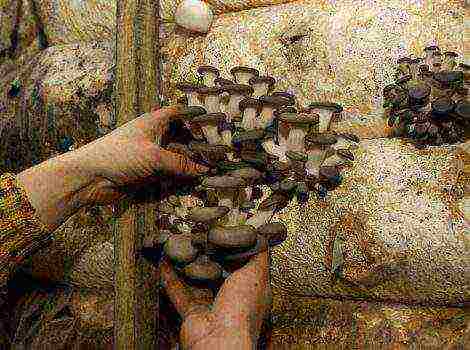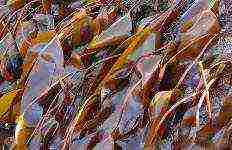 Do not be surprised - we do not suggest that you equip a small pool at your summer cottage and grow this plant there. Just under the name of seaweed, as a rule, kelp kelp is known, which is sold in a dry form in pharmacies.
Do not be surprised - we do not suggest that you equip a small pool at your summer cottage and grow this plant there. Just under the name of seaweed, as a rule, kelp kelp is known, which is sold in a dry form in pharmacies.
And true seaweed is the closest relative of katran, or Tatar horseradish. It, like asparagus, is grown to produce young bleached leaves and shoots and is used in the same way.
Seaweed is valuable because, firstly, it is an early vegetable, and secondly, it can be used for forcing, for which any dark place is suitable.
This perennial plant of the cabbage family has a thick rhizome and fleshy gray leaves up to 50 cm long. Seaweed blooms in the second year. The plant is quite cold-resistant and hibernates in central Russia without shelter.
Seaweed can be propagated by seed or by dividing the roots. It grows well on sandy, sufficiently moist, but not too moist soils. The seeds sprout very slowly, therefore, before sowing, they are soaked directly in the pods for 1 - 2 days. To speed up the emergence of seedlings, the pod is carefully removed. In early March, germinated seeds are sown in peat cubes.
When the plants have 4 - 5 true leaves, they can be transplanted to a permanent place. This is usually done in early May. Seedlings are placed on beds 1 m wide according to the scheme 25 × 25 cm. Before planting, organic fertilizers are applied to the grooves.
Caring for seaweed consists in loosening the soil and watering. In the second year, the plants are planted, leaving a distance of 80 - 100 cm between them.
When propagating by dividing old bushes, they are immediately planted in a permanent place.
Every spring, manure and mineral fertilizers are applied, which are embedded in the soil during digging.
Harvest in the second year, pre-bleaching the leaves. In autumn, the plants are covered with boxes or pots, and in spring young bleached leaves 15 - 20 cm long are formed under them, and they are cut off. The leaves of annual and biennial plants are cut once, and the older ones are cut repeatedly.
Forcing can be done in cellars during the winter. In autumn, plants are planted in boxes and kept at a temperature of 10-15 ° C. Depending on the temperature, winter forcing lasts 1 - 1.5 months.
The "plantation" of seaweed can remain in one place for up to 5 years. In order not to weaken the plants, it is recommended to remove the flower shoots. It is advisable to dig up plants over 5 years of age, divide the rhizomes and plant them on a new bed.
For vegetative propagation, root segments are used. They are cut in the spring and immediately planted in the beds. Here they take root, and in the spring of next year, seaweed is given a permanent place. The main thing is to purchase sea kale seeds, and it is quite easy to propagate it.
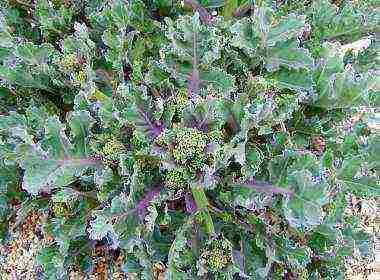
Seaweed is widespread at a depth of 1-20 m in the sea, but recently it is increasingly grown in a summer cottage. They use leaf stalks up to 15 cm long for food. How to grow this cabbage in your garden?
The best soil for seaweed is sod-podzolic, well supplied with nutrients. Before planting seaweed, rotted manure is introduced. Then deep loosening of the soil is carried out by digging.
You can grow seaweed in the garden for 10-20 years in one place. It is suitable for a humid climate, but in moist soil, its roots rot. Every autumn it is necessary to add sand with rotted manure. This soil serves as a fertilizer and protects against frost, which allows forcing in early spring.
Propagate seaweed by seeds or by dividing the root.It is best to sow seeds with fresh seeds in the fall, and in the spring, plant seedlings in open ground. Do not sow directly on the field without first growing seedlings.
Before sowing, the seeds are soaked in water for 24-36 hours. Sowing is best done in a continuous manner in a row. After sowing, the seeds are planted to a depth of 3-4 cm. Seedlings are planted when 4-5 leaves have appeared on the plants.
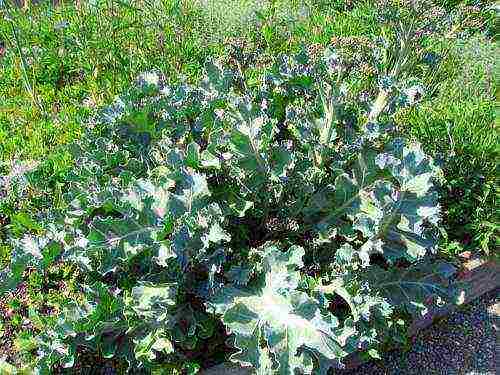
Seaweed
For the reproduction of seaweed, cuttings are cut off the necessary shoots in early spring and immediately planted in a permanent place in a previously prepared soil. Side shoots or parts of old plants can be used as cuttings.
Caring for seaweed consists of watering and inter-row cultivation. In the fall, remove all yellowed leaves and excess lateral shoots. Leaves are whitened by filling the plants with a layer of sand (20 cm) and covered with fine manure on top. By spring, the bleached leaves are cut off. Collecting sprouts of seaweed begins in the third spring. Plants that were grown from cuttings are harvested in the coming spring, but more often they are left untouched for another year so that they grow stronger.
When harvesting, the middle buds of seaweed are broken off, the lateral ones are left, since they give shoots. If crop seeds are needed, the best specimens are left unbleached. They have flowers and pods that ripen by July-August. During this period, they are collected.
Japanese kelp or seaweed loves cold water, therefore it grows more in the middle and northern Primorye. In China, the southern race of Japanese kelp was bred and grown. In the north of Primorye, up to 50 kg of kelp were grown in the 80s on one leash of ropes with a diameter of 6 mm and a length of 6 m, and up to 100 tons of kelp were obtained from one hectare of suspended plantations.
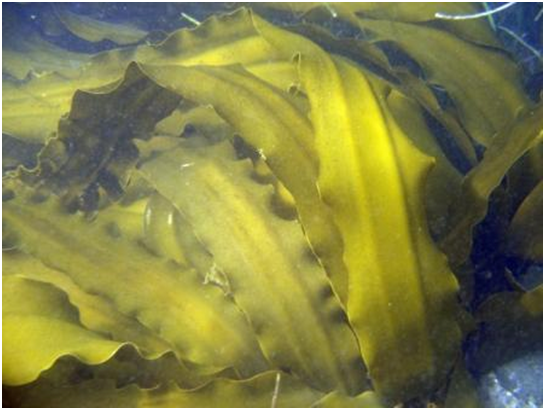
To obtain seedlings of seaweed in the fall, usually in October, when the sea water temperature drops to 12 degrees, rope leads are pre-soaked from harmful substances. Thalls of cabbage with a well-developed spore-bearing tissue are taken into the sea, as early as possible in the morning on a cloudy day. The thallus are covered from light, transported to the shore, placed under a canopy with a ‘draft’ ’for 4-6 hours. In a container that does not contain toxic substances, a layer of kelp thallus is placed on the bottom, then a layer of leashes, then a layer of thalli, etc., only 5-6 layers of thalli and leashes. The top layer should be thallus. Thallus with leashes and microscope slides are poured with filtered seawater 10-15 cm above the top layer to control the challenging process and kept until morning. If in the morning it is found that 10-20 settled zoospores are found on the control slides with a microscope magnification of 120 times in the field of view, the challenge is considered good. Challenged leashes are set in bunches into the sea on a rope located at a depth of 2 m from the surface. Then the leashes with tied weights are hung on a cable every 0.5 m. Since the germination of seedlings is very dense with good challenge, the seedlings are thinned out in the spring. No more than 150 thalli are left on the leash, the rest are woven into 4-5 new leashes. In the summer, a rope with leashes is buried 4-5 m from the surface into colder water to prevent the destruction of thallus. In autumn, the rope is placed at a depth of 2 m from the surface. Harvesting is carried out next spring, when the age of the kelp reaches 1.5 years, before the sea water warms up to 10 degrees, after which the polychaete spirorbis can settle on the thallus, and the kelp will lose its commercial qualities.
The yield of grown kelp from 1 hectare can reach more than 100 tons.
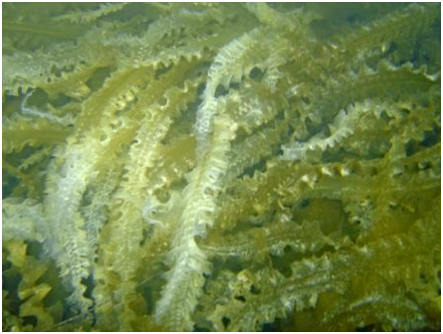
Kelp kelp is more common in the south of Primorye than Japanese kelp, and it is easier to grow it here because of the higher water temperature.
